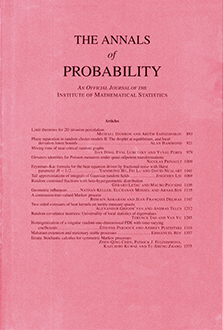Abstract
Methods for proving functional limit laws are developed for sequences of stochastic processes which allow a recursive distributional decomposition either in time or space. Our approach is an extension of the so-called contraction method to the space $\mathcal{C}[0,1]$ of continuous functions endowed with uniform topology and the space $\mathcal{D}[0,1]$ of càdlàg functions with the Skorokhod topology. The contraction method originated from the probabilistic analysis of algorithms and random trees where characteristics satisfy natural distributional recurrences. It is based on stochastic fixed-point equations, where probability metrics can be used to obtain contraction properties and allow the application of Banach’s fixed-point theorem. We develop the use of the Zolotarev metrics on the spaces $\mathcal{C}[0,1]$ and $\mathcal{D}[0,1]$ in this context. Applications are given, in particular, a short proof of Donsker’s functional limit theorem is derived and recurrences arising in the probabilistic analysis of algorithms are discussed.
Citation
Ralph Neininger. Henning Sulzbach. "On a functional contraction method." Ann. Probab. 43 (4) 1777 - 1822, July 2015. https://doi.org/10.1214/14-AOP919
Information





